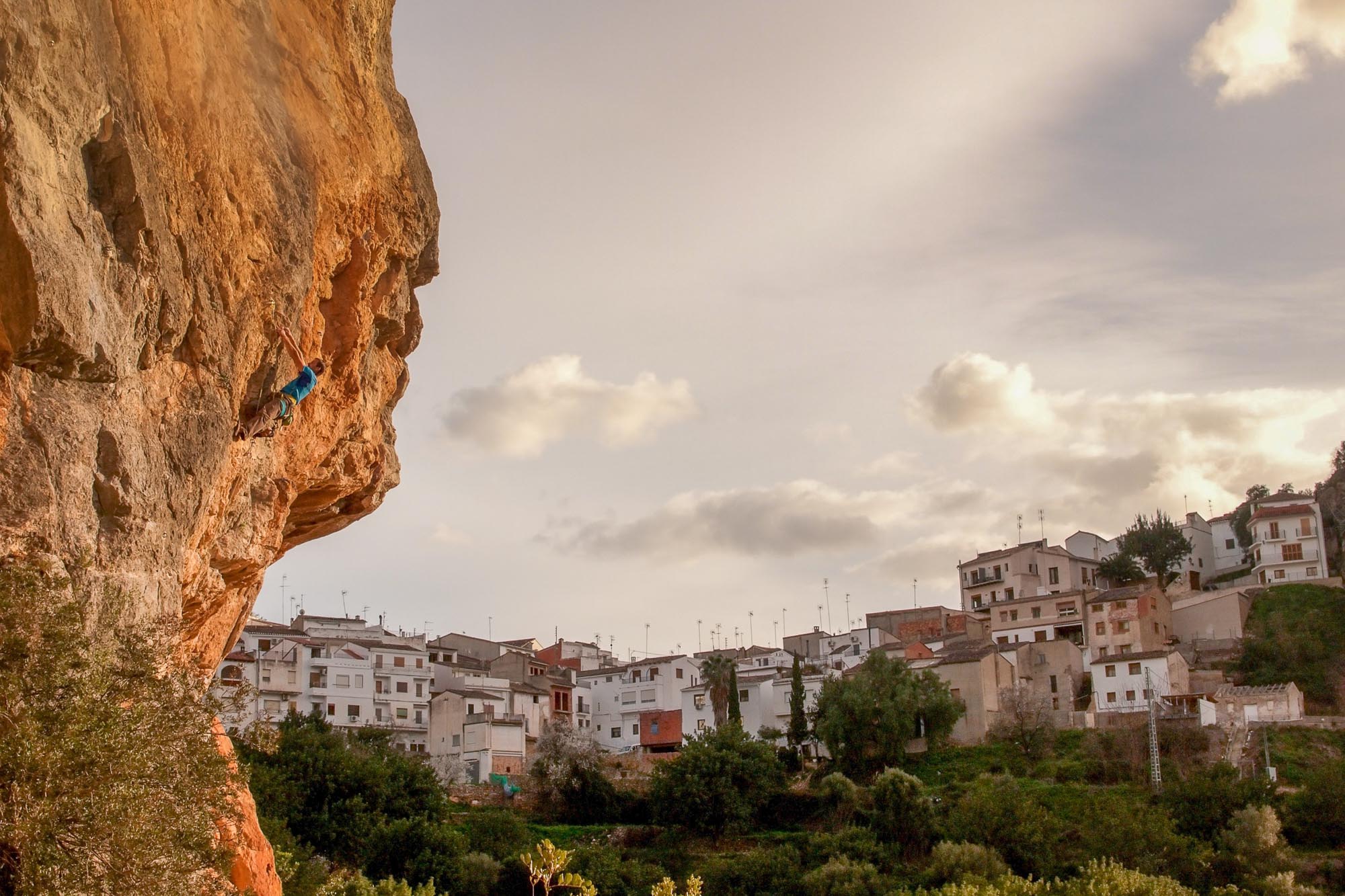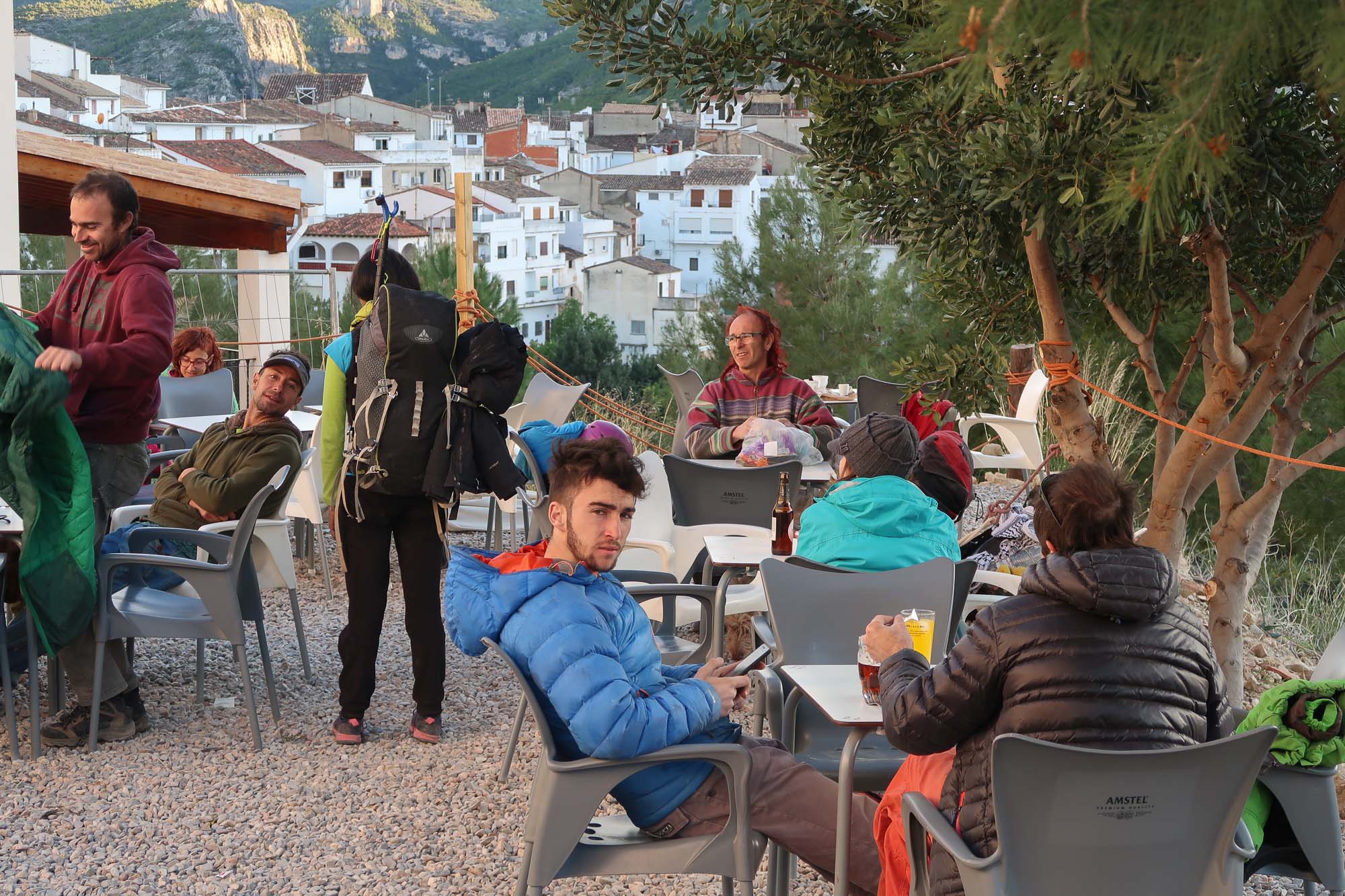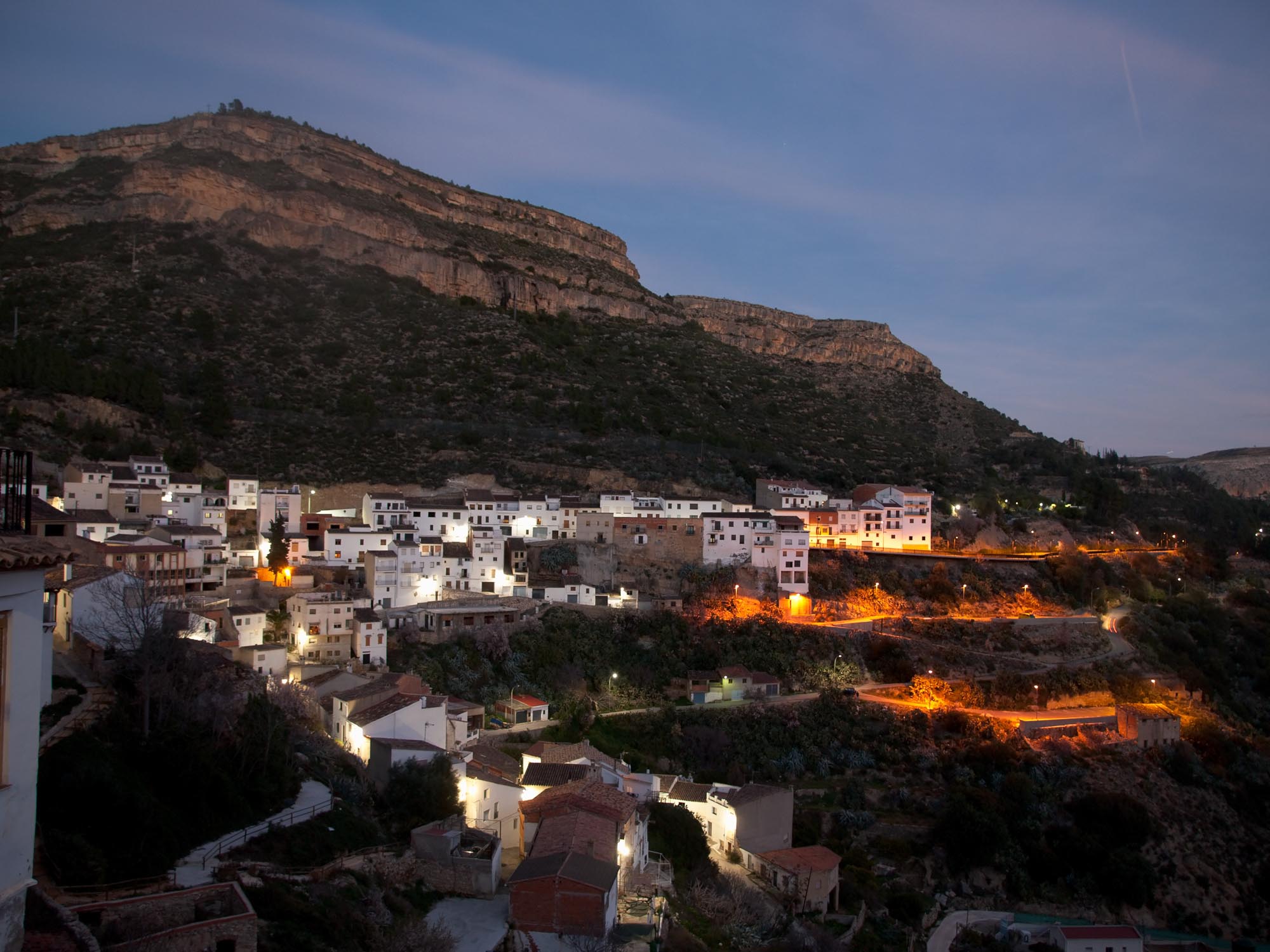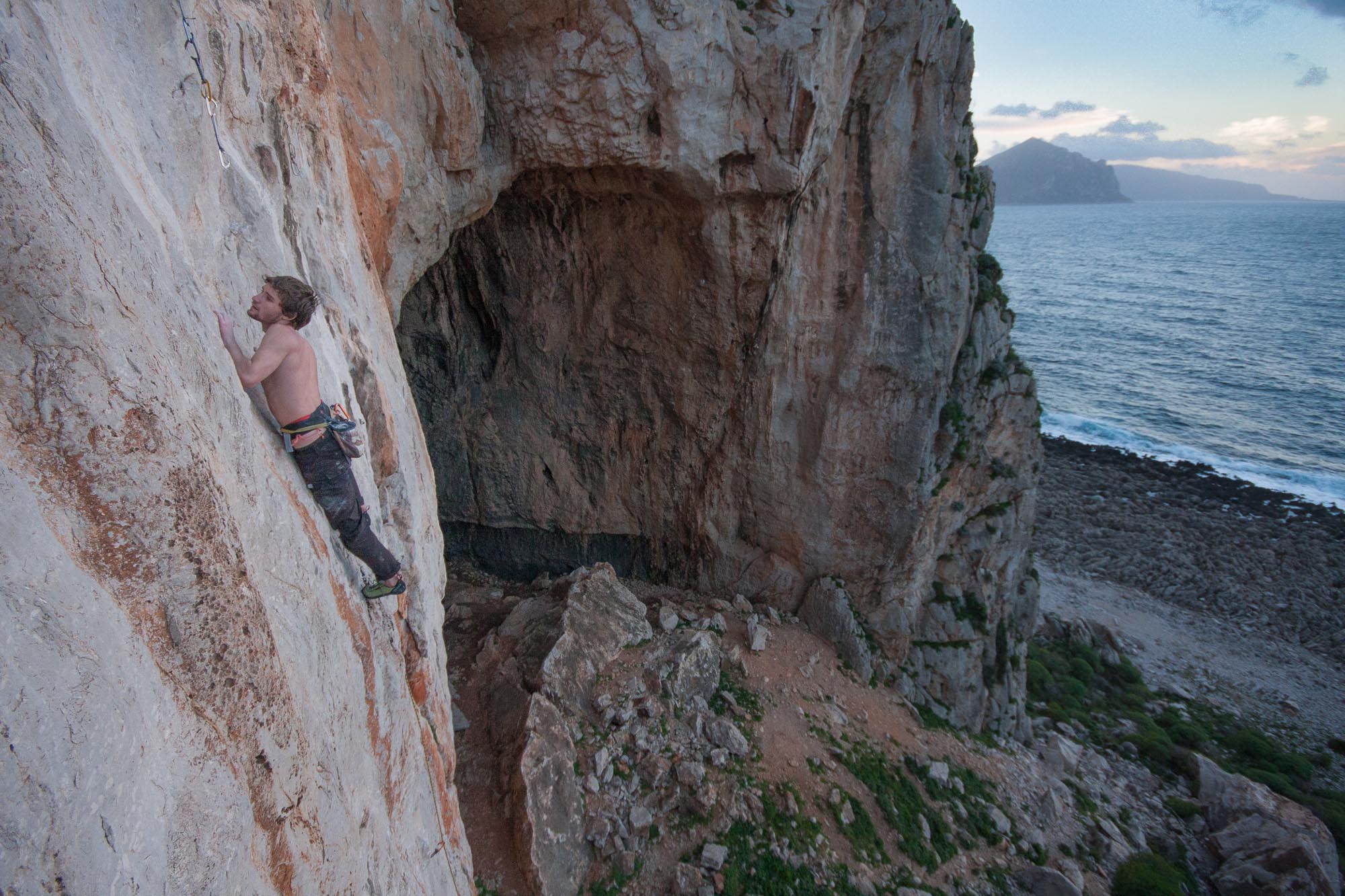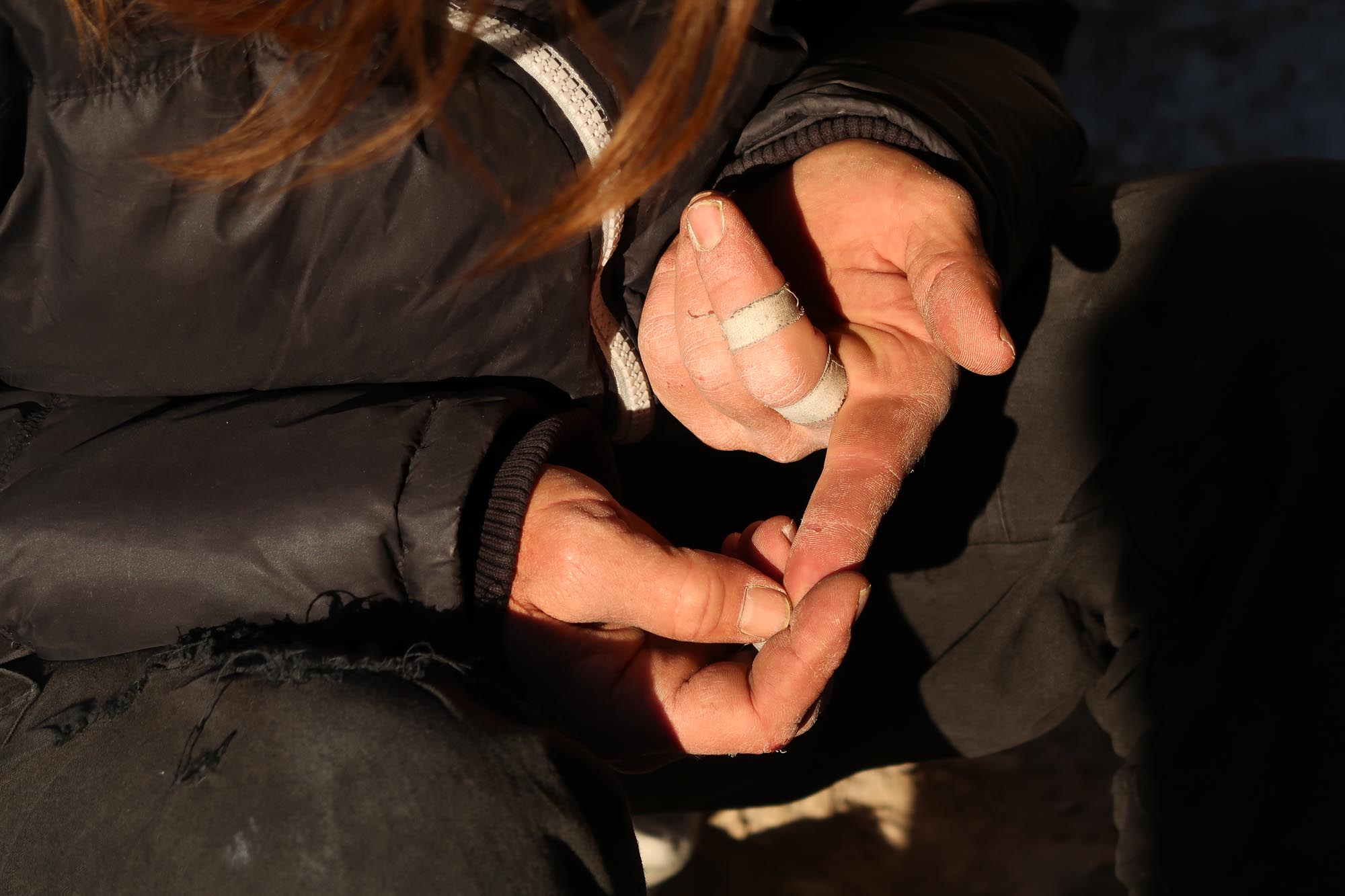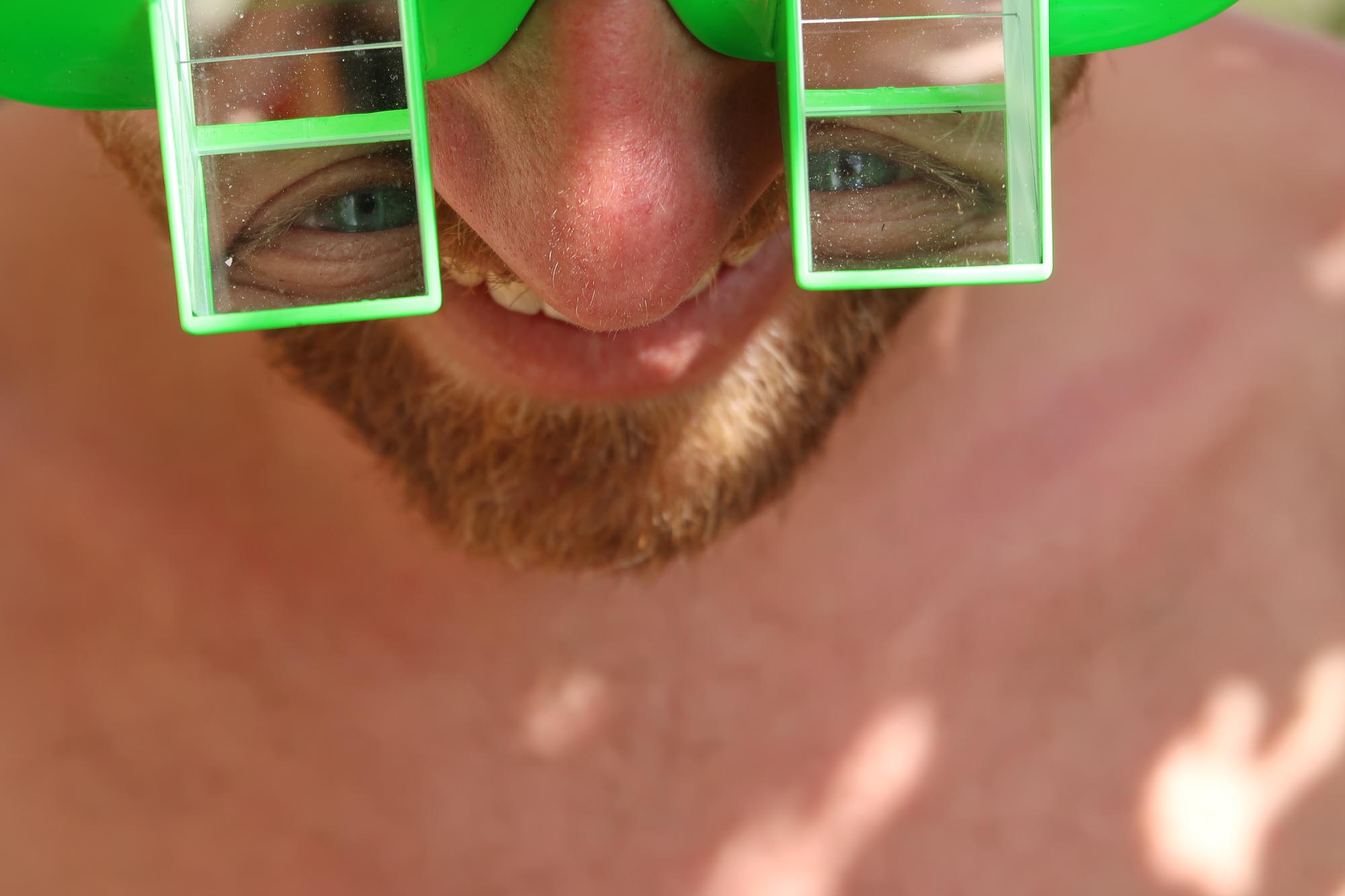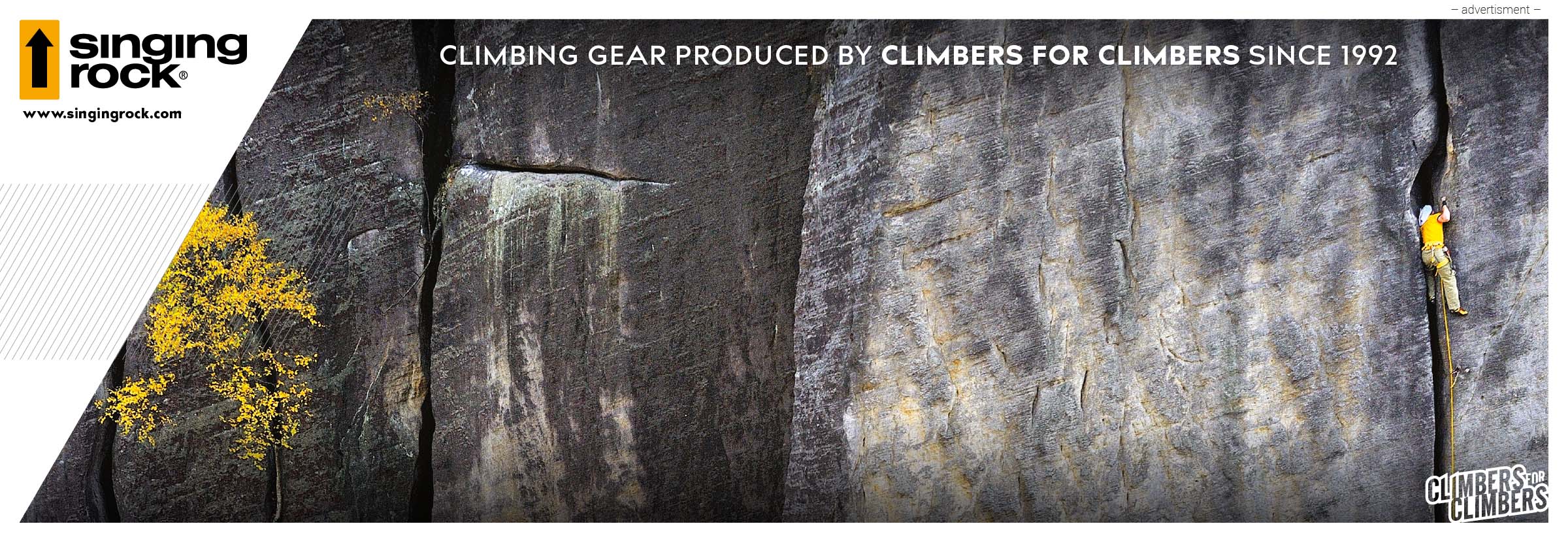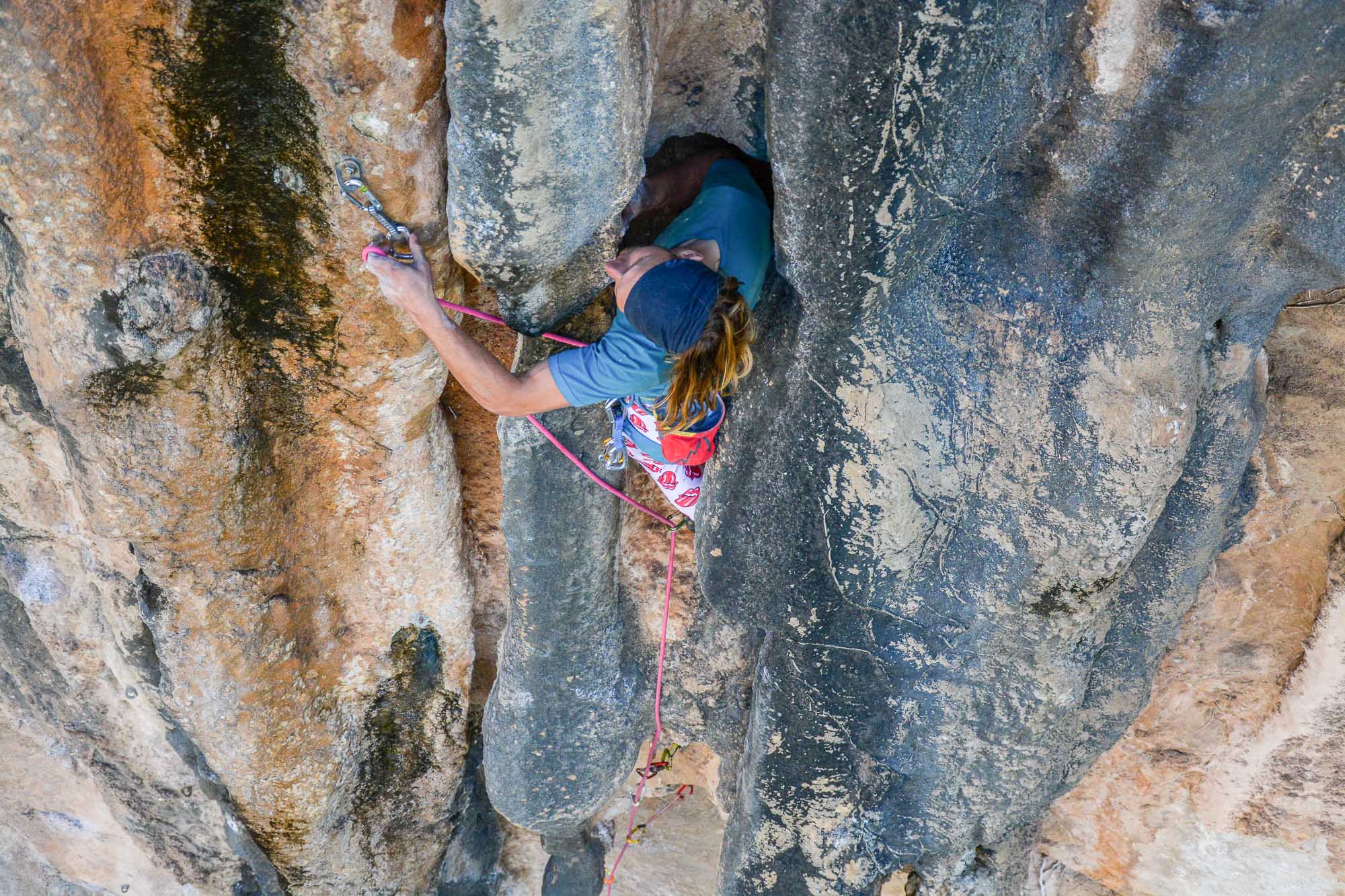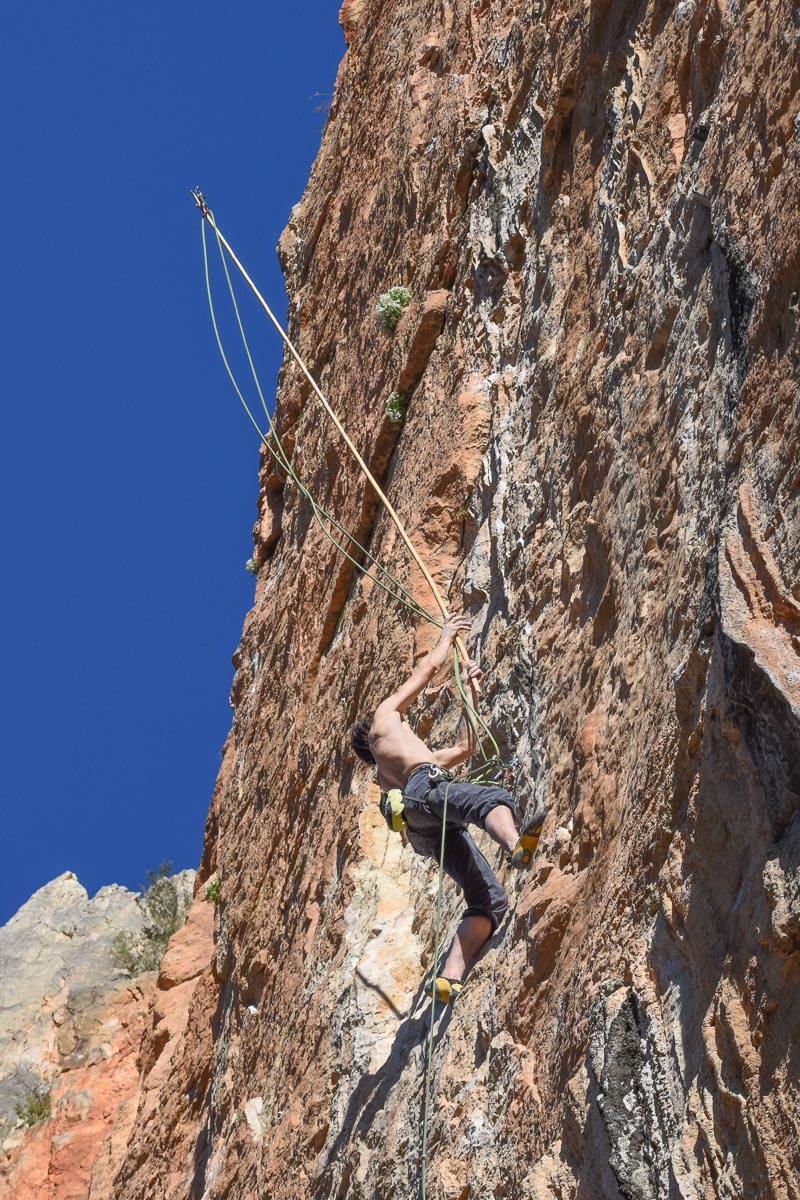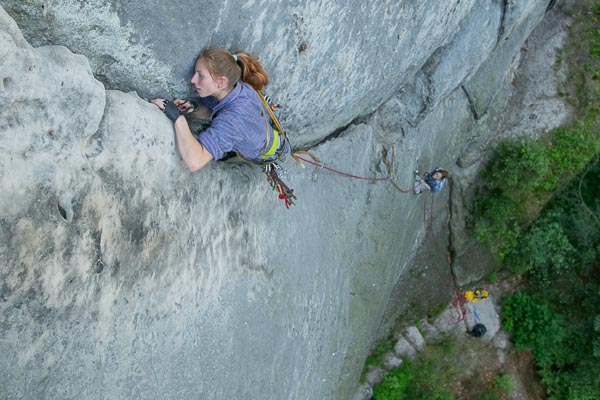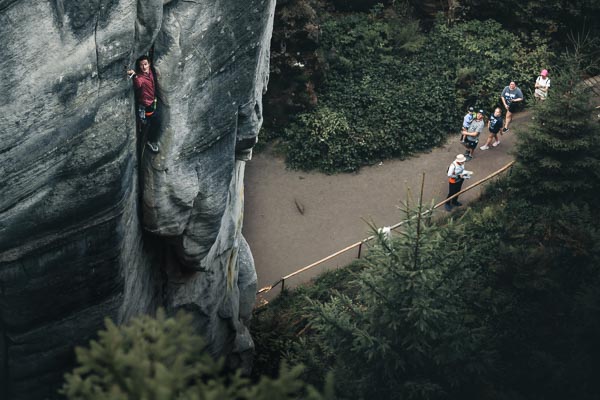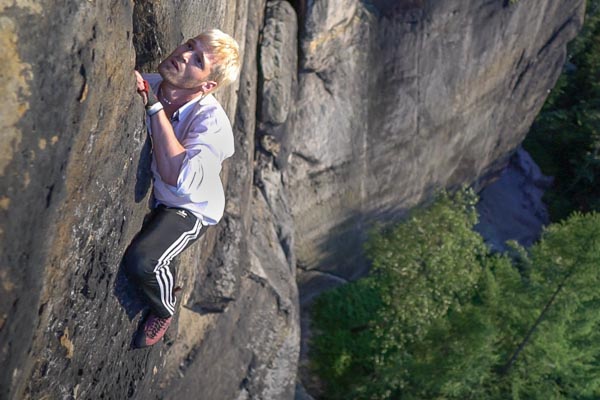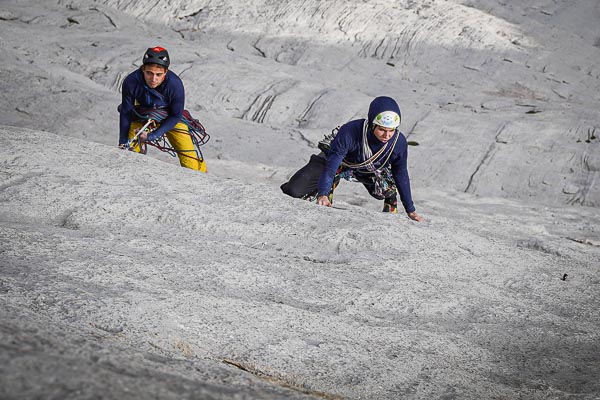I SIT, THREFORE I SEND
Anytime you visit a hard sector, the atmosphere thickens. Everybody’s sitting around – the climbers in the bolts and their belayers in the ropes. They keep staring up through the mirrors of their belay glasses. It might seem like a funny scene, but there’s no space for jokes here. This is a serious business!
A FIELD TRIP
If we ever tried to unify all the climbers under a single label, it would only cause massive misunderstandings. Just imagine a strong boulderist finding himself high in the winter mountains. Or a weather-beaten mountaineer who doesn’t even have toes to wear tight rock climbing shoes on. Sometimes, though, you get surprised even by stepping across the borders of seemingly close disciplines.
You don’t even need to go abroad to find that traits that make you a hero at home can only turn you into a weirdo in certain areas. But how about a winter sport climbing trip to Spain!? A melting pot of cultures, climbing styles and approaches. Let’s taste the mix! The reasons for misunderstanding can vary. One of the major cultural differences turned out to be those traditional sandstone climbing habits that got under the skin of many Czech climbers.
Sandstone areas and many other small crags in the Czech Republic create an ideal mycelium for the growth of peculiar climbers who tend to be stunned when they leave their local crags and go climbing abroad.
WELCOME TO THE HARDCORE
Looking at the hardcore crags, where “the game is already on”, you immediately realize one thing – nobody’s actually climbing, they just sit in their ropes. Our bunch found this “sporty” tradition rather strange, especially because these were one-pitch routes, without belay anchors. Most of the climbers didn’t even get to the chains – and the possibility that their climbing partners are just lame seemed unlikely. So what are those people sitting up there like some sort of insect actually doing? The only thing they seem to be working on are instructions towards their belayers: “Five meters down, please! One meter up!” Besides that, they just seem to be chalking the same holds over and over (only to immediately brush them down). Examining these strange climbers’ species, we did not detect any other physical activity, though.
One day, Anča turned to me with a triumphant grin on her face, and I immediately knew she was going to tell me something important: “I realized why we keep seeing just those sitting climbers! Those rare few who actually climb up are so quick that we don’t even notice them among the sitting crowd.”
That’s right – in the hard sectors, a climber actually ascending the rock is quite a rare and marginal phenomenon. It seems as if all the “elite climbers” are already starting the routes with the intention of sitting in them.
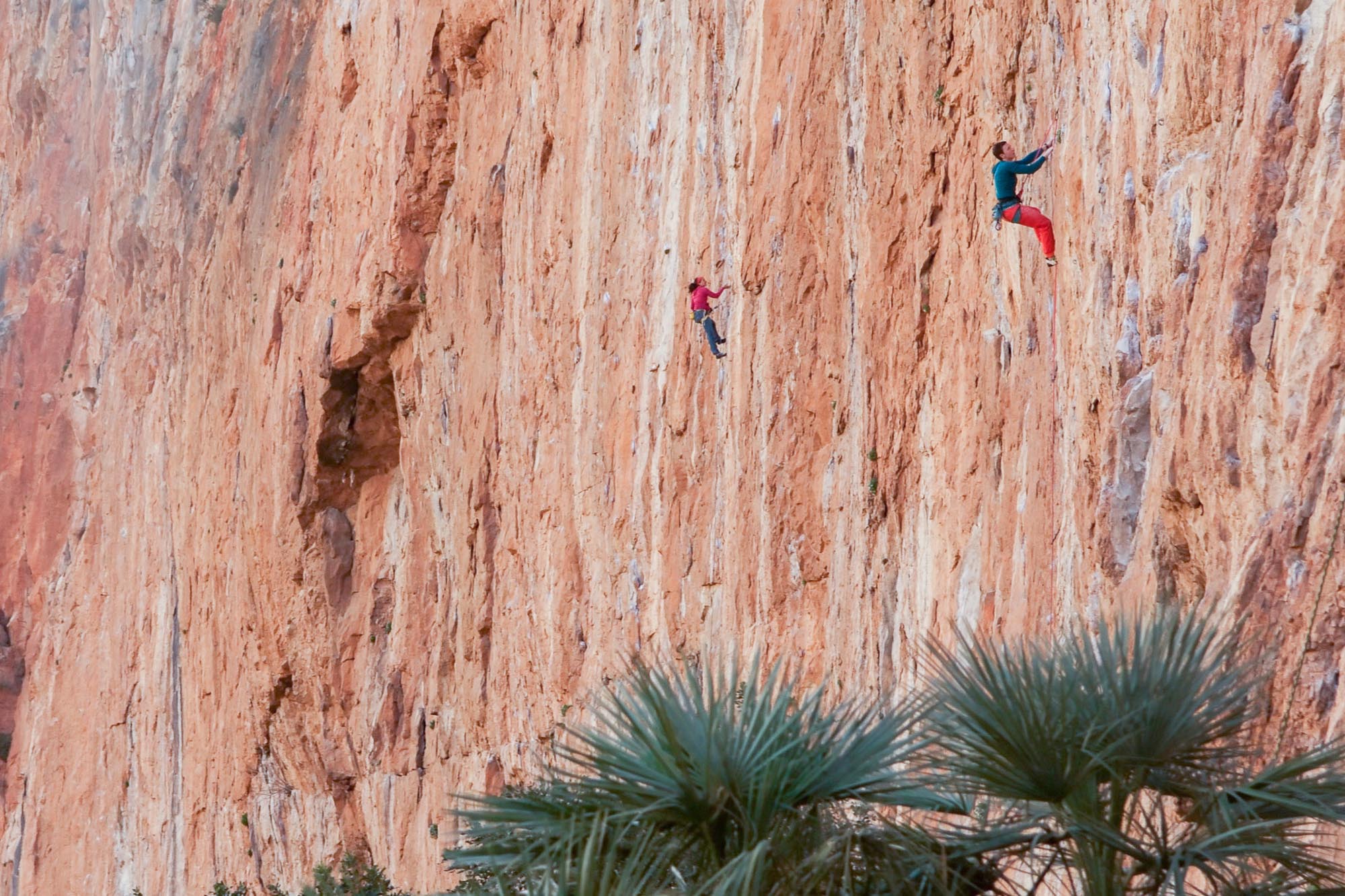
THE “S‑OS” STYLE
This sedentary climbing style sharply contrasts with the so-called OS attempts: “I’ll try to climb this line without falling in it.” Of course such an approach brings many joys as well as sorrows.
All right, let’s go for it. It’s getting tougher now! You’ve done the boulder and what is left are just few easier moves and then an obligatory final sequence. You fight for every single inch on the verge of falling. You change your hands on polished crimps, try in vain to find the best position on the sloping stalactite, and you cannot help thinking about giving up the eventual second try. You’re almost sure that those polished slopers will send you flying towards the (in)attentive belayer.
You go for the next move. Probably the last one. You find yourself fixed in a awkward static position, knowing that you cannot hold like that for too long. God, so many possibilities, so many chalk marks and hands so pumped! Your shaky limbs call for help with the emergency signal that is usually ignored. “Save our souls!” Three dots, three dashes. You see the same message on the wall, drawn in chalk. In despair, you reach for the biggest mark. The dash leads you to a sharp sidepull. You quickly choose one of the three crimps marked by dots, pull yourself with your left foot up to the next dash… and suddenly, you’re safe. Instead of sinking in a stormy sea of rock, you’re being guided all the way to the chains by a system of well-marked beacons and buoys. You’ve just done another OS. (Recently, Adam Ondra discussed the issue of chalk marks in our interview.)
“Elaborate system of chalk beacons and lights leads you all the way to the anchoring chains. Another OS on your list.”
HOW LONG IS A SIXTY-METER ROPE?
We figured out that many European sport climbers use static ropes while climbing. If they used 60-meter rope, they would sure be able to lower climbers from 40-meter routes, like we do. Perhaps not only their ropes are static but their belayers as well. They squat a few meters from the rock and barely check the climber through their periscope goggles as he or she takes down an infinite number of quickdraws. No action, no movement, no re-tying. Pure boredom. On the other hand, they don’t have to deal with the situations we do — such as when the belayer needs to climb to the third bolt in order to lower down the leader. When belayers need to use such tactics, climbing through the crux of the route and back down free-solo, in their slippers, they rob themselves of the unique chance to try the route flash.
And what about the issue of protection? In the Czech Republic, protection usually becomes one of the key factors that make you decide whether or not you even want to start the route. In our context, we always consider the number of grounders you could take in the line and their possible consequences or even fatality. In Spain, it is the number of quickdraws that becomes the main limiting factor. The inept remarks of the more affluent Westerners can be easily answered with: “I’ve got too many projects in other sectors.” However, the idea of slipping on a polished foothold into the only clipped bolt because you’re saving the rest of quickdraws for the rest of the route cannot be easily overcome. If only they were real steel ringbolts and not some faint commercial pieces of fragile metal. After all, that might be the reason why there is so many of them bolted onto the rock.
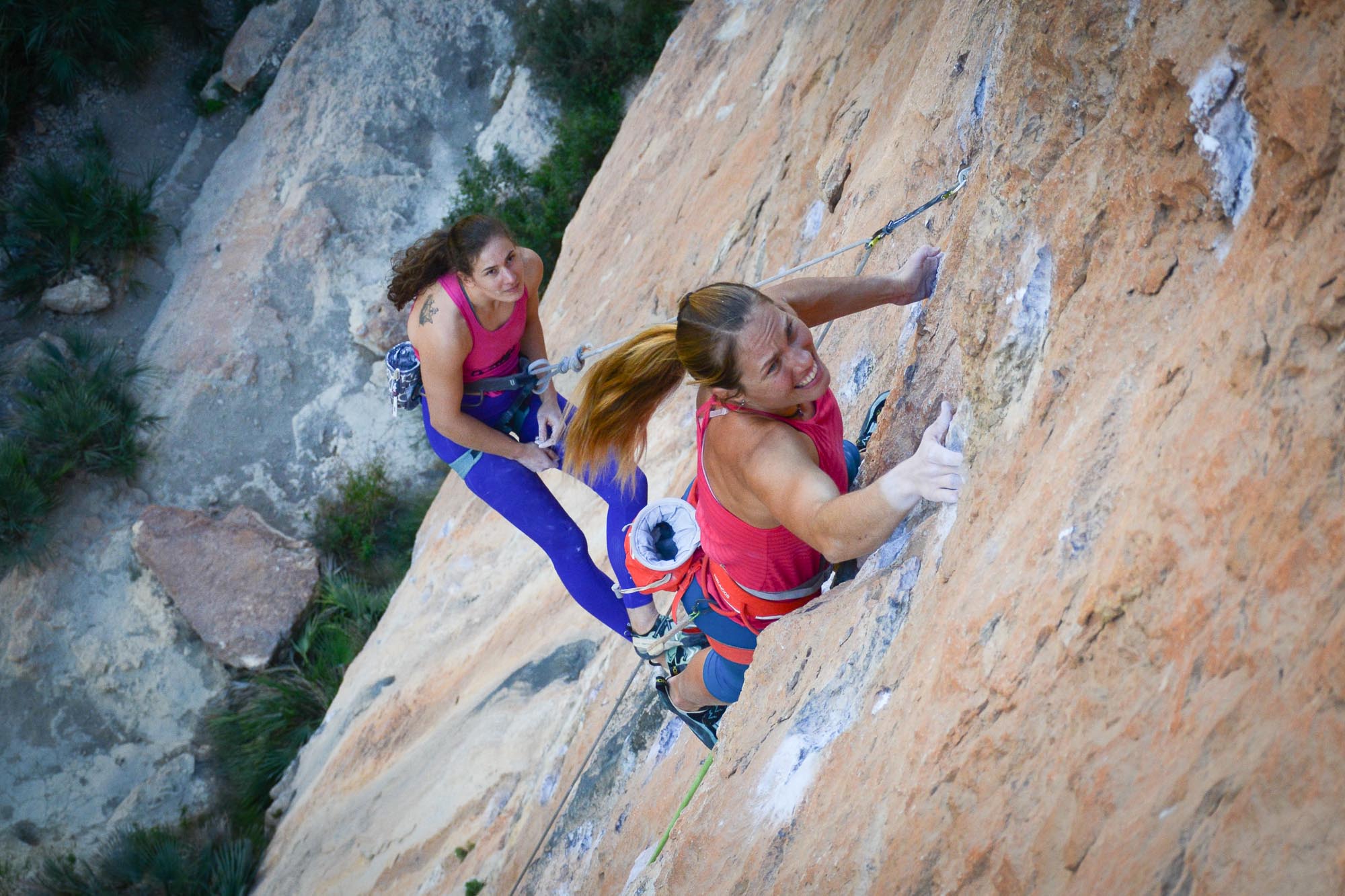
NUMBERS AND CATCH-PHRASES
Climbing is mostly about catch-phrases. Of course, numbers play their role as well – how many meters is it up to the first ringbolt, how many would you fall underground or how many more would you need for a safe rappelling? I still think that memorable lines and catch-phrases are what it’s mostly about, though. Each style of climbing or a local area has its own lines that you need to understand if you want to avoid, to put it mildly, “problems”. One I would remember forever is the classic motivation line from our sandstone areas: “Try that one – you’ll like it… a nice hand jam and then a chimney to finish.” With such lines you can be almost sure that the climber wouldn’t be so happy leading them.
In European sport climbing areas, it usually works vice-versa. Climbing “nice and clear line with good holds,” might not pull you through “nice and easy transition from a chimney to an off-width”, unprotected and twenty meters off the ground. But it will make you ponder the fact that you might not be able to climb “nice routes with good jugs” anymore. At least if it was described as hard endurance climbing. But everyone says there’s nothing hard about that one. “Perhaps endurance is not considered a problem around here,” thinks the completely pumped climber while trying to untie his or her laces after an attempt. It would be a better idea to go for an “ugly, hard, technical line with no holds,” where you can actually use your feet.
Grading system is yet another obstacle. 7a here, 7b there. These are often strength-based, unpleasant, polished routes, where technique doesn’t get you far. Or, on the contrary, easy routes with plenty of footholds, where you only need to be careful not to step on any of the bolts. So, French grading system, they said. I am a bit confused – the grade 7 can mean so much depending on the countries and areas you come from. I’ve almost got used to the French grading system but suddenly I climbed a 7c that felt like a true Saxon VIIc (5c+ fr.). How else to explain a relaxed, and even over-protected chimney graded 7c?
SELECTED LINES AND CATCH-PHRASES
BOLD = locutionary act (semantics = lexical content of the utterance)
ITALICS = illocutionary act (meaning of the utterance, the speaker’s aim)
“What is your project today?“
Bailed any routes today?
“F**ing, technical, dirty shit of a line.“
Nice, technical route, usually harder than its guidebook grade.
“If you want, you can use our quickdraws.“
Compassionate move towards the poor climbers.
“Brüchig, Shit geboltet!“
Nice, technical route, usually harder than its guidebook grade.
“Your rope seems too short!“
By-standers not getting how a dynamic rope works.
“Do you want to use our clip stick?“
Offer from the guys, who come from cultures, where St. Nicholas comes before 6th of December .
“Ta droga jest bez sensu, za grosz logiki! Straszny parch, asekuracja z dupy.“
Nice, technical route, usually harder than its guidebook grade.
“I broke a key foothold.“
After two weeks of trying that 8a, it was time to use the lexicon of excuses.
“I’ll warm up on that 8a+ … I mean clipping through it as in A1… at least I will hang my quickdraws up there“
I’m not going to climb the nearby 7a+. My friends could see me fail.
“Ja potrebujem palici, neviem cvaknúť!“
Hand me the stick.
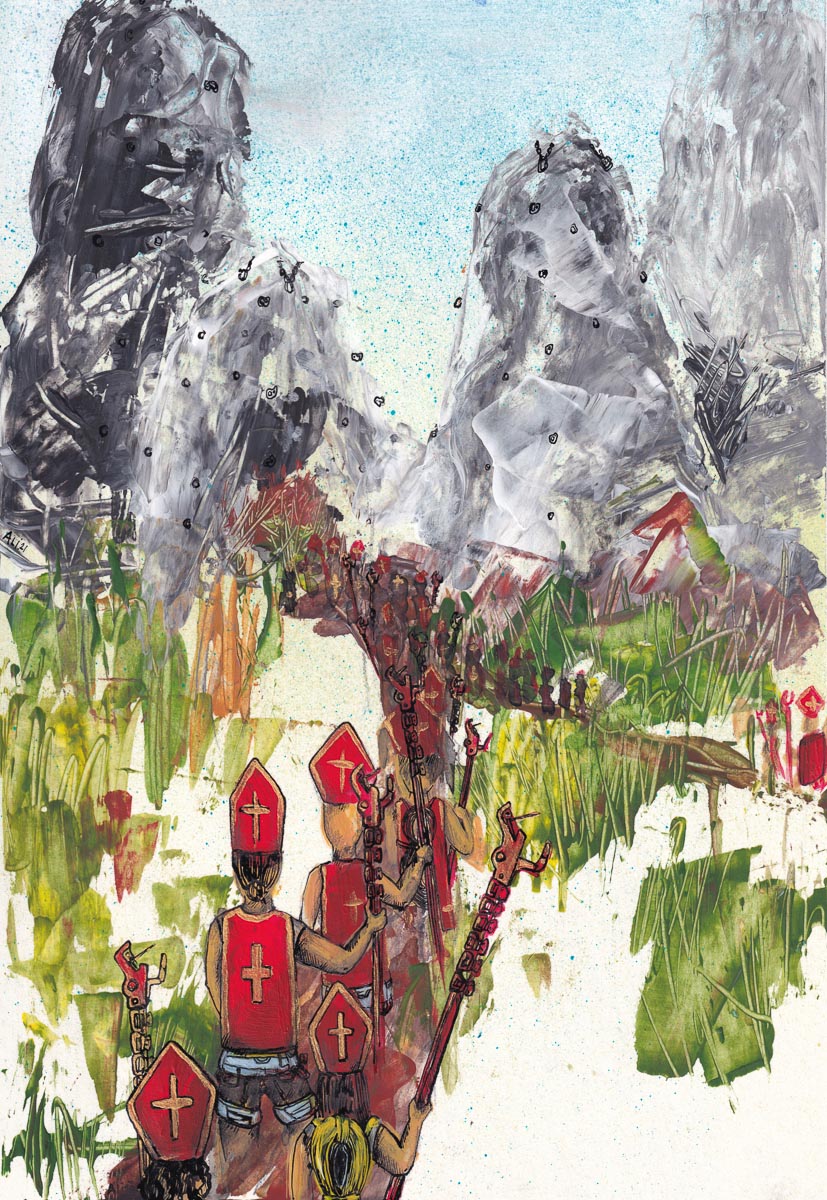
FINALLY CHRISTMAS
And then there are the sticks. Something between a fishing rod and a St. Nicholas’s walking stick. A tool to ensure that every single line could be climbed. Clipping the first bolt without actually starting the route or even touching the rock is the real revolution now. As long as the climber can clip the following bolt, he or she can little by little eventually get to the chains. If only they used good old wooden sticks. They swing with the plastic telescope clippers all around them until they reach the following bolt. In the Czech Republic, we meet such guys during our dress-up tradition on St. Nicholas day… however, in Spain, the saint’s day seems to be celebrated every day.
These climbers don’t bring sweets, though. They only deliver gifts to themselves! Around twenty shiny quickdraws clipped each time they climb. Where is the poetics of the taped birch branch, with which you try clipping the first ring for a while, fail, and decide to freeclimb the hard section anyway. For about 100 euros, you can get a standard telescope clipping stick, that offers around 6.5 meters of safe climbing.
At least you still get some refreshing stories of people who had to jump the whole route down bolt by bolt because they could not clip into the chains. Without any spare steel carabiner and no quickdraws to lose, there was no other option.
__________

